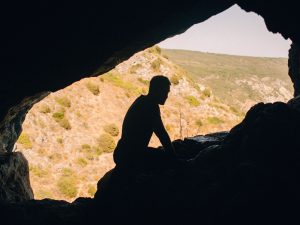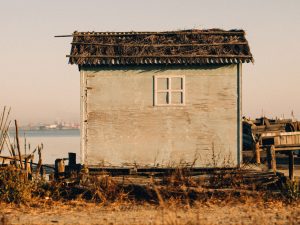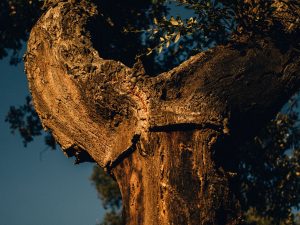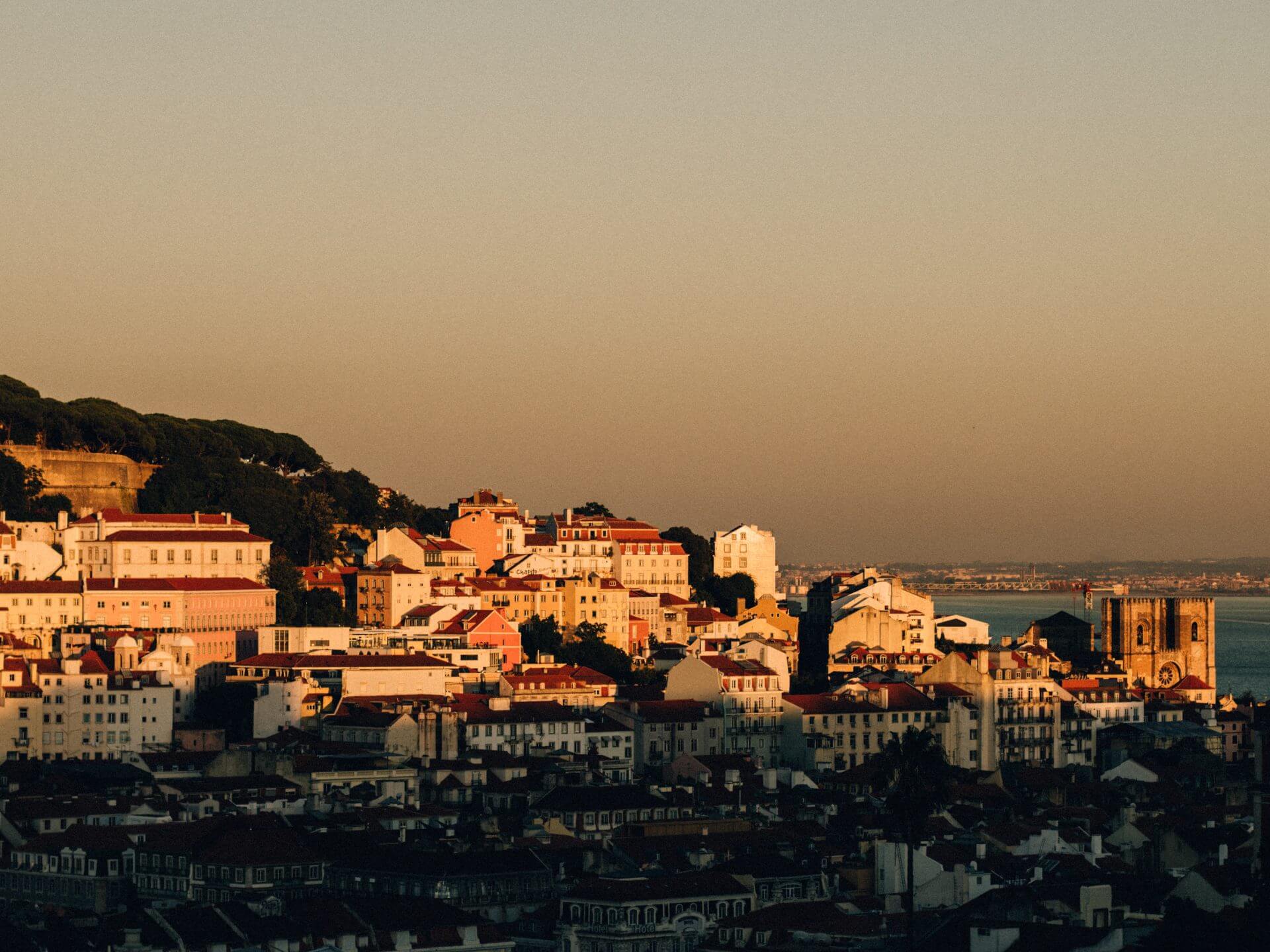
More than Longing
ch. IMore than Longing
Alfama, Lisbon
ch. I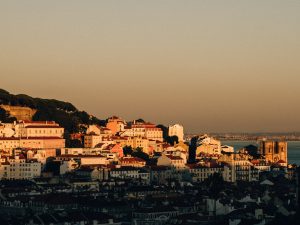 >
>
The oldest neighborhood of one of the oldest cities in the world, Alfama was once the whole of Lisbon. Its name derives from the Arabic word for baths, al-hamma (الحَمّة), a remnant of the 500-year period when Portugal was under Moorish control. As the city spread west, Alfama became home to the fishermen, the poor and outcast, the prostitutes and drug addicts, who due to the neighborhood’s hilltop location, were inordinately spared from the devastating 1755 earthquake that destroyed 90 percent of the city.
It was here, among Alfama’s narrow twisting alleyways, its dusky dens, brothels and back-room salons, that a singular Portuguese musical form took shape: fado. Loosely translated as “fate” or “destiny,” fado is a melancholic song style, often about the sea, lost love or the life of the poor, evoking a sentiment of wistful resignation.
“We have a word in Portuguese that is very important to understanding fado, saudade, which some people translate as longing, but it's more than that,” said Ricardo José Lopes, founder of Fado Redux, a popular curated event series he started in 2015 that rediscovers and reinterprets the genre through music and art.
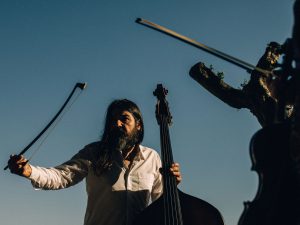
“Saudade is a feeling of missing something or someone that's far away, and they might come back or not,” he said. “I think it's related to our history. We have a harbor, where everyone comes and goes. The navigators went away and maybe they never came back. It’s a melancholic feeling that represents a lot of our culture—even the pace of Portuguese people, you know, time is important for us. We are not loud. We speak in a very low volume.”
Though no one can say for sure, fado is thought to have originated in the Portuguese colonies of Brazil and Cape Verde, where the music of African slaves mixed with medieval Portuguese song traditions. It was then brought back to the continent by sailors and traders and flourished in the 19th century among Alfama’s bohemians and maritime proletariat. The steps of the Church of Santo Estêvão became a gathering place for fadistas, or fado musicians, who would play their sensual, elegiac music for the neighborhood’s ragtag nocturnal residents long into the morning hours.
“Fado is, like us Portuguese and like the city of Lisbon, a big mix,” said Nuno Saraiva, an illustrator and cartoonist whose works on fado have made him one of today’s most prominent interpreters of the tradition. “We are not Spanish. We are not Berber. We are not Celtic. We are a mix of everything all together.”
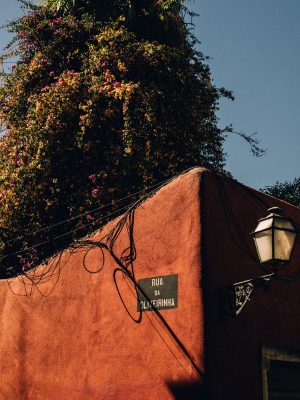
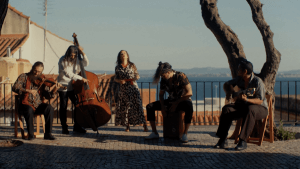
The 40-year era of dictatorship that gripped Portugal until 1974 is said to have been defined by “three F’s”– football, fado, Fátima. Like sport and religion, fado came to be seen as rigid and rule-bound, mired in the past. Gone was the spirit of freedom and constant mutation that characterized its early development. But in recent years, this spirit is returning as new generations rediscover the melancholic musical tradition.
“I was born with fado. My mother used to sing a lot at home, but my friends would make fun of me for singing it,” said Ana Margarida, the lead singer of the Lisbon band Bela Ensemble, which mixes fado with diverse influences from flamenco to prog rock. “Nowadays, things are different. We have a lot of young people that want to play and sing fado. Like 10, 15 years ago it wasn’t like that.”
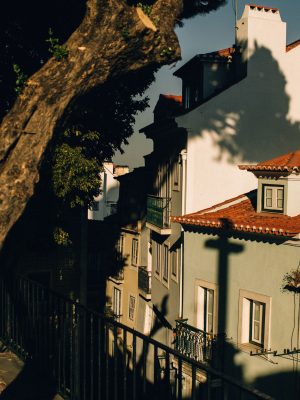
Since gaining UNESCO Intangible Cultural Heritage status in 2011, fado has been thriving in the traditional houses of Alfama, like Mesa de Frades, set in a tiled 18th-century chapel, Tasca de Bela and Parreirinha de Alfama, where musicians play late into the evening while guests dine on traditional Portuguese fare—and mixing with other genres and influences in more experimental settings like Fado Redux and the free-spirited, Brazilian-owned Tejo Bar.
“This is pure urban music to its core,” said Ricardo as a gauzy dusk began to fall over Alfama. “As soon as you hear it, you feel a connection. And then when you start to think about what that represents in terms of the bohemians of Lisbon and how these streets bred the music, embracing different people, different genres of music, different influences and mixing with the tradition of the city center, it really touches you. It touches your soul.”
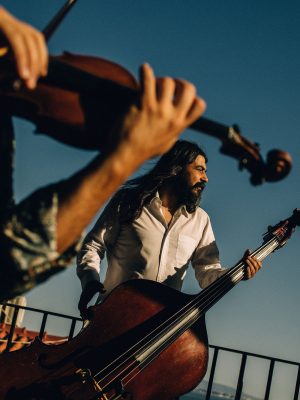
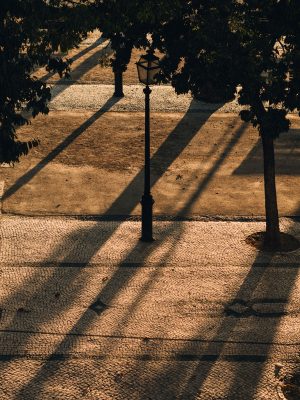

More than Longing
Alfama, Lisbon ch. IThe oldest neighborhood of one of the oldest cities in the world, Alfama was once the whole of Lisbon. Its name derives from the Arabic word for baths, al-hamma (الحَمّة), a remnant of the 500-year period when Portugal was under Moorish control. As the city spread west, Alfama became home to the fishermen, the poor and outcast, the prostitutes and drug addicts, who due to the neighborhood’s hilltop location, were inordinately spared from the devastating 1755 earthquake that destroyed 90 percent of the city.
It was here, among Alfama’s narrow twisting alleyways, its dusky dens, brothels and back-room salons, that a singular Portuguese musical form took shape: fado. Loosely translated as “fate” or “destiny,” fado is a melancholic song style, often about the sea, lost love or the life of the poor, evoking a sentiment of wistful resignation.
“We have a word in Portuguese that is very important to understanding fado, saudade, which some people translate as longing, but it's more than that,” said Ricardo José Lopes, founder of Fado Redux, a popular curated event series he started in 2015 that rediscovers and reinterprets the genre through music and art.

“Saudade is a feeling of missing something or someone that's far away, and they might come back or not,” he said. “I think it's related to our history. We have a harbor, where everyone comes and goes. The navigators went away and maybe they never came back. It’s a melancholic feeling that represents a lot of our culture—even the pace of Portuguese people, you know, time is important for us. We are not loud. We speak in a very low volume.”
Though no one can say for sure, fado is thought to have originated in the Portuguese colonies of Brazil and Cape Verde, where the music of African slaves mixed with medieval Portuguese song traditions. It was then brought back to the continent by sailors and traders and flourished in the 19th century among Alfama’s bohemians and maritime proletariat. The steps of the Church of Santo Estêvão became a gathering place for fadistas, or fado musicians, who would play their sensual, elegiac music for the neighborhood’s ragtag nocturnal residents long into the morning hours.
“Fado is, like us Portuguese and like the city of Lisbon, a big mix,” said Nuno Saraiva, an illustrator and cartoonist whose works on fado have made him one of today’s most prominent interpreters of the tradition. “We are not Spanish. We are not Berber. We are not Celtic. We are a mix of everything all together.”


The 40-year era of dictatorship that gripped Portugal until 1974 is said to have been defined by “three F’s”– football, fado, Fátima. Like sport and religion, fado came to be seen as rigid and rule-bound, mired in the past. Gone was the spirit of freedom and constant mutation that characterized its early development. But in recent years, this spirit is returning as new generations rediscover the melancholic musical tradition.
“I was born with fado. My mother used to sing a lot at home, but my friends would make fun of me for singing it,” said Ana Margarida, the lead singer of the Lisbon band Bela Ensemble, which mixes fado with diverse influences from flamenco to prog rock. “Nowadays, things are different. We have a lot of young people that want to play and sing fado. Like 10, 15 years ago it wasn’t like that.”

Since gaining UNESCO Intangible Cultural Heritage status in 2011, fado has been thriving in the traditional houses of Alfama, like Mesa de Frades, set in a tiled 18th-century chapel, Tasca de Bela and Parreirinha de Alfama, where musicians play late into the evening while guests dine on traditional Portuguese fare—and mixing with other genres and influences in more experimental settings like Fado Redux and the free-spirited, Brazilian-owned Tejo Bar.
“This is pure urban music to its core,” said Ricardo as a gauzy dusk began to fall over Alfama. “As soon as you hear it, you feel a connection. And then when you start to think about what that represents in terms of the bohemians of Lisbon and how these streets bred the music, embracing different people, different genres of music, different influences and mixing with the tradition of the city center, it really touches you. It touches your soul.”


10317 Berlin, Germany
1100-383 Lisbon, Portugal

